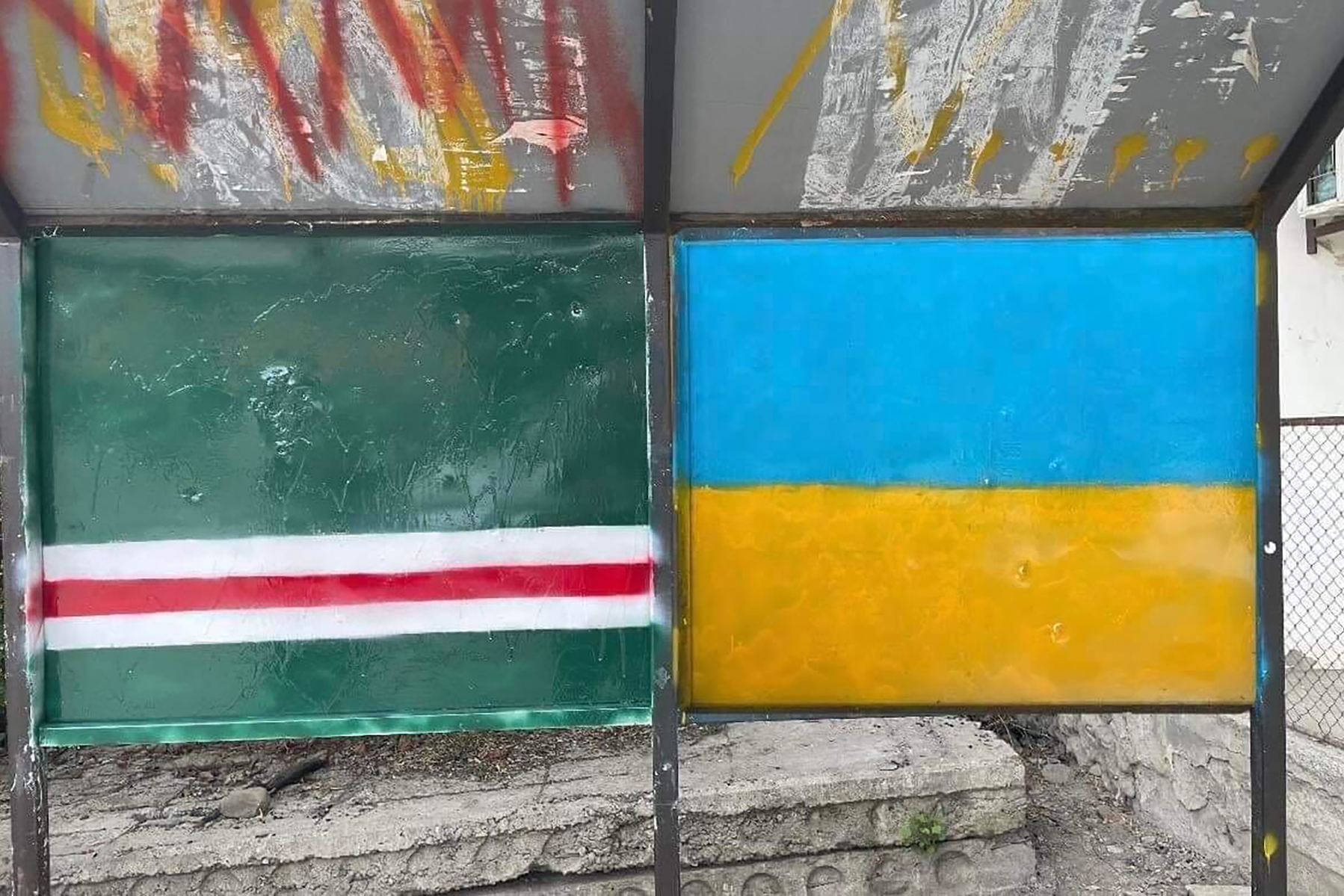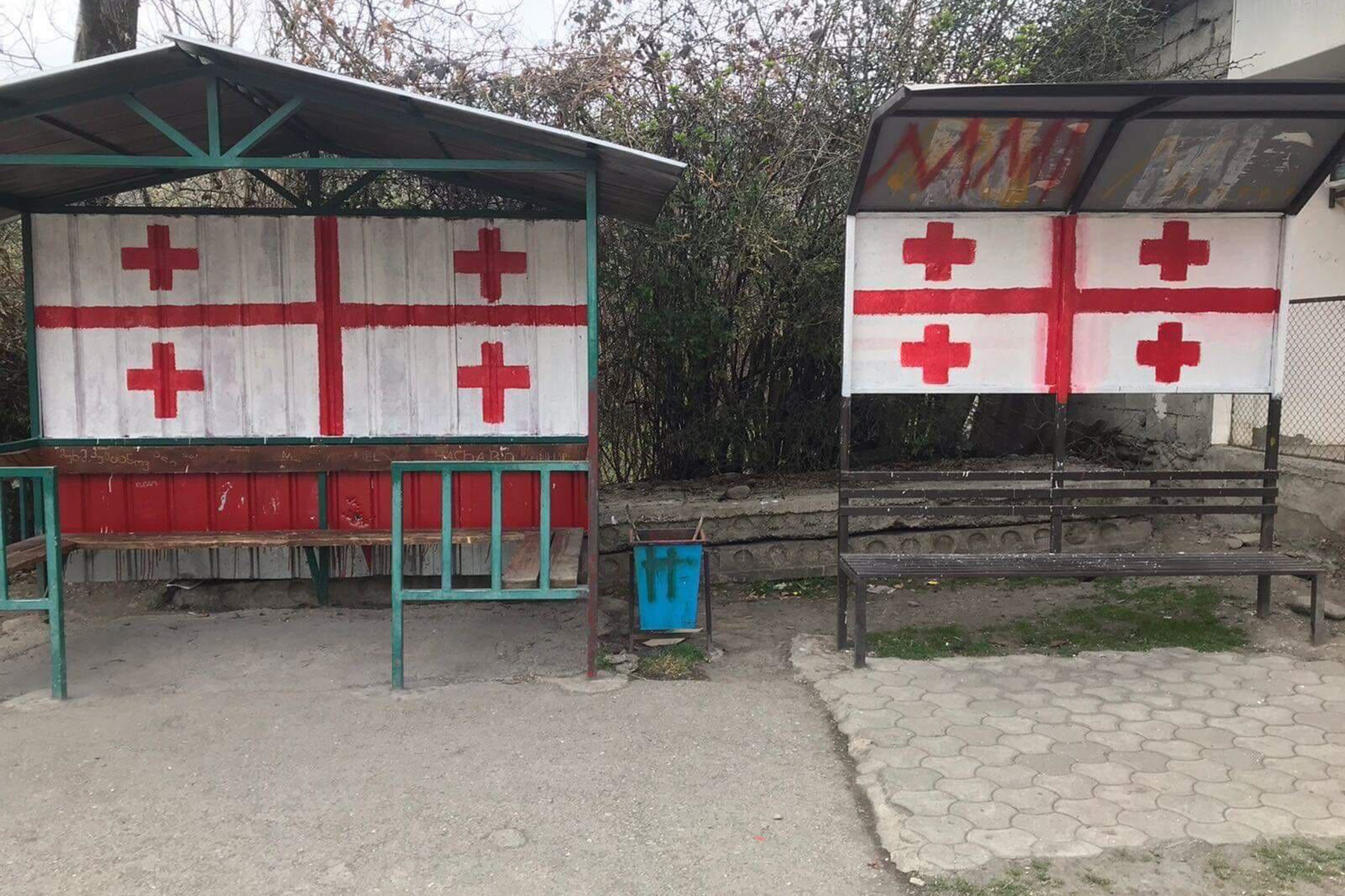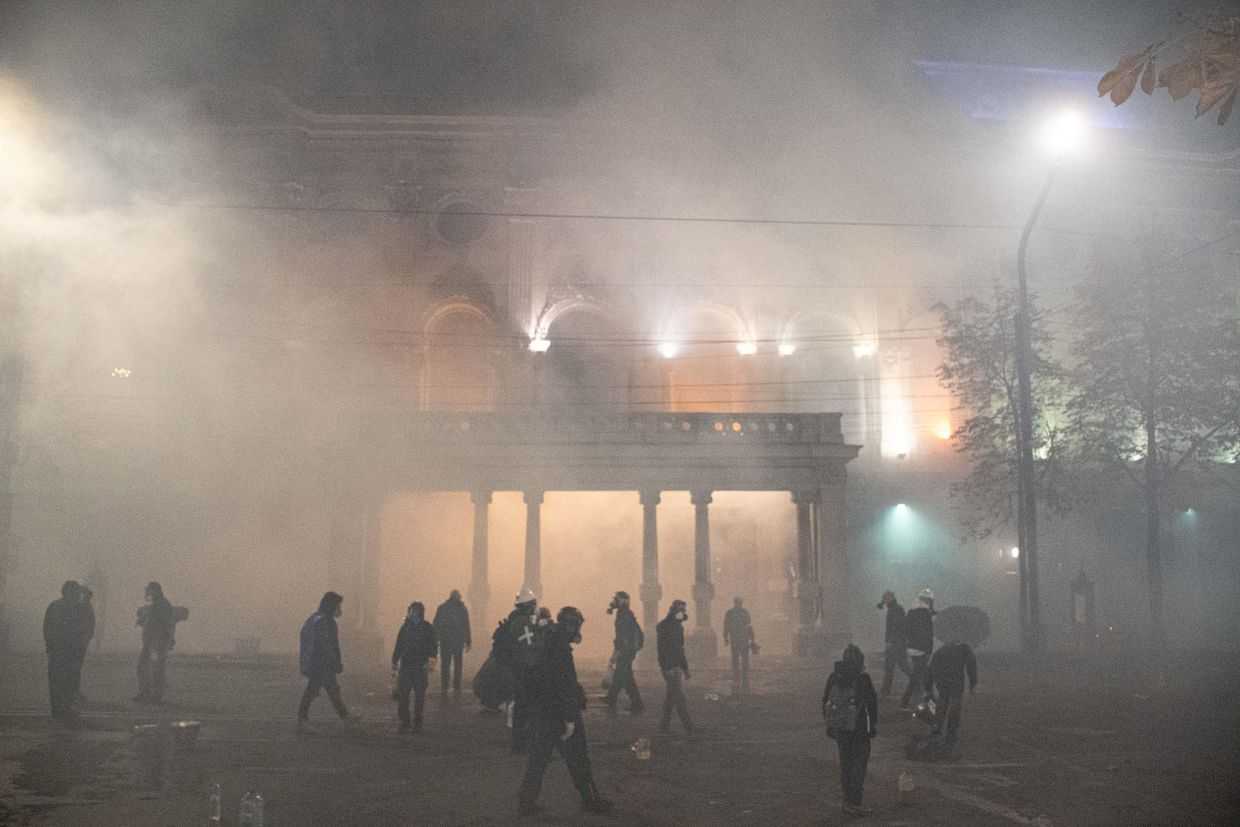
A recent controversy surrounding graffiti of an Ichkerian flag in the Pankisi Valley underlines the enduring tensions between the local community and the Georgian authorities — especially after Russia’s invasion of Ukraine.
It’s not every day that graffiti warrants a 30-minute special reportage on Rustavi 2 a major and government-leaning television channel in Georgia.
The special, which aired on 7 May, concerns an apparent panic that began in March 2022. That month, a group of teens spraypainted a green, white, and red flag on a village bus stop — the flag, the reportage alleges, triggered consternation among the local population who saw it as ‘too much’ and a ‘provocation’.
It was the flag of the Chechen Republic of Ichkeria, the independent Chechen state that was crushed by the Russian Federation over the course of the First and Second Chechen Wars in the 1990s and early 2000s. Graffiti of the flag would not be out of place in the Pankisi Valley. The valley’s residents are primarily Kists, a Chechen sub-ethnos. Many have relatives in Chechnya, and others still are refugees from the two wars — and are sympathisers of Ichkeria.
For many, the flag is a symbol of freedom and opposition to Russian aggression, and the response that the harsh response graffiti of the flag sparked among local authorities is a signal of the enduring discrimination the Kist community faces in Georgia — especially under a government that many feel is too accommodating to Russia.
It did not take long for the flag to be quickly painted over by police, who had covered it up with red paint the very same day. Shortly thereafter, The teens then returned and painted the flag anew, and drew a Ukrainian flag next to it, for good measure.

By the following morning, both flags had been painted over. Meanwhile, the police had figured out who the artists behind the flags had been and interrogated the teens, threatening them with arrest.
The youths, however, were not deterred and repainted the flags one last time. This time, the police did not use red paint. Instead, the flags were painted over with a Georgian flag.
It was this last act that sparked the ire of Sulkhan Bordzikashvili, a Tbilisi-based activist and journalist who was born in Pankisi.
‘Imagine if someone repainted the Georgian flag and painted another, then it would be a provocation’, he told OC Media. ‘It is a priori wrong to repaint the flag of the country. That’s when I became certain it was done as a provocation [against the pro-Ichkeria Kist community].’
Sulkhan then purchased Ichkerian flags and advertised that he was happy to hand them out to anyone in Pankisi — better the teens have flags at their homes than getting in trouble with the police over graffiti, he said.
Pankisi resident Tinatin Pareulidze, who is a member of the 16th Element, an initiative group aimed at peace building and conflict resolution, told OС Media that the Rustavi 2 framing of residents’ attitudes toward the flag of Ichkeria in Pankisi is inaccurate.
‘The flag of Ichkeria is generally associated among the Kists with freedom and courage, and the war in Ukraine aroused these emotions among the locals and made it clear to the masses [outside Pankisi] what Chechnya is fighting for’, she explained. ‘I do not see a threat of separatism or provocation of any conflict in this fact.’

A troubled relationship
Tamta Mikeladze of the Centre for Social Justice told OC Media that this would be a blow to relations between Pankisi residents and the central government.
‘Doubts about the foreign policy of the Georgian Dream government, such as whether they show any morality towards the Kremlin or how well they manage to normalise the threats posed by Russia and support a clearly pro-Western policy, are basically present today in all public discussions. I can say that this anxiety and suspicion arose in the Pankisi Valley much earlier than in Georgian society.’
Mikeladze says that there was immediate talk in Pankisi about perceptions of a pro-Russia political orientation in Georgia, or about how easily figures associated with the head of Chechnya Ramzan Kadyrov crossed into Georgia, trying to enlist support in the Pankisi Valley.
According to Mikeladze, people in Pankisi have not felt safe for a long time — especially in light of repeated state violence against them. The incident with the flag will only increase this feeling, she argued.
‘The very serious and ill-conceived police operation in the Machalikashvili case has generated high distrust of the government and strict security measures’, she explained.
Temirlan Machalikashvili was a 19-year-old resident of the Pankisi Valley who was killed in his family home by a squad of Georgian Security Service officers in his home in 2017. The handling of the teen’s killing, who Security Services say they suspected of involvement in terrorism, has been criticised by rights groups and Georgia’s Public Defender.
[Read more: Opinion | Nearly two years after the killing of Temirlan Machalikashvili there are still no answers]








